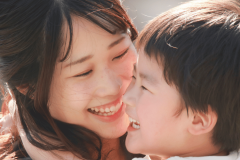- Overview
-
Dr. Sladen studies hearing and hearing loss in children. The majority of his work is in the area of cochlear implants; a device used to manage severe hearing loss. Dr. Sladen’s recent work has examined children with severe unilateral hearing loss (single-sided deafness) and their outcomes following cochlear implantation.
- Publications
-
Providing Mindful and Informed Health Care for Patients Who Are LGBTQ+: Perspectives for Clinical Audiology
American Journal of Audiology
DOI: 10.1044/2023_AJA-22-00112
2023Speech perception abilities of adult cochlear implant listeners with single-sided deafness vs. bilateral hearing loss
Cochlear Implants International
Douglas P. Sladen and Daniel M. Zeitler
DOI: 10.1080/14670100.2022.2054098
05/2022American Cochlear Implant Alliance Task Force Guidelines for Clinical Assessment and Management of Cochlear Implantation in Children with Single-Sided Deafness
Ear and Hearing
DOI: 10.1097/AUD.0000000000001204
2022Auditory Development and Hearing Disorders
Encyclopedia of Infant and Early Childhood Development
DOI: 10.1016/B978-0-12-816512-6.00014-8
2020Assessment of Temporal Fine Structure Processing among Older Adults with Cochlear Implants
Otology and Neurotology
DOI: 10.1097/MAO.0000000000002533
2020Application of Kaizen Principles to a Large Cochlear Implant Practice: A Continuous Quality Improvement Initiative at Mayo Clinic
Otology and Neurotology
DOI: 10.1097/MAO.0000000000002246
2019Mechanisms of Localization and Speech Perception with Colocated and Spatially Separated Noise and Speech Maskers under Single-Sided Deafness with a Cochlear Implant
Ear and Hearing
DOI: 10.1097/AUD.0000000000000708
2019Development of the cochlear implant quality of life item bank
Ear and Hearing
DOI: 10.1097/AUD.0000000000000684
2019Consensus practice parameter: audiological assessment and management of unilateral hearing loss in children
International Journal of Audiology
DOI: 10.1080/14992027.2019.1654620
2019Cochlear implantation for single-sided deafness in children and adolescents
International Journal of Pediatric Otorhinolaryngology
DOI: 10.1016/j.ijporl.2018.12.037
2019Cochlear implant quality of life (CIQOL): Development of a profile instrument (CIQOL-35 profile) and a global measure (CIQOL-10 Global)
Journal of Speech, Language, and Hearing Research
DOI: 10.1044/2019_JSLHR-H-19-0142
2019Survey of the American Neurotology Society on Cochlear Implantation: Part 1, Candidacy Assessment and Expanding Indications
Otology and Neurotology
DOI: 10.1097/MAO.0000000000001632
2018Intraoperative Cochlear Implant Device Testing Utilizing an Automated Remote System: A Prospective Pilot Study
Otology and Neurotology
DOI: 10.1097/MAO.0000000000001719
2018Investigating Speech Recognition and listening effort with different device configurations in adult cochlear implant users
Cochlear Implants International
DOI: 10.1080/14670100.2018.1424513
2018Cochlear implantation in adults with asymmetric hearing loss: Speech recognition in quiet and in noise, and health related quality of life
Otology and Neurotology
DOI: 10.1097/MAO.0000000000001763
2018Cochlear implant associated labyrinthitis: A previously unrecognized phenomenon with a distinct clinical and electrophysiological impedance pattern
Otology and Neurotology
DOI: 10.1097/MAO.0000000000001615
2017Health-related quality of life outcomes following adult cochlear implantation: A prospective cohort study
Cochlear Implants International
DOI: 10.1080/14670100.2017.1293203
2017Cochlear implantation for single-sided deafness: A multicenter study
Laryngoscope
DOI: 10.1002/lary.26102
2017Early outcomes after cochlear implantation for adults and children with unilateral hearing loss
Laryngoscope
DOI: 10.1002/lary.26337
2017Evaluation of a revised indication for determining adult cochlear implant candidacy
Laryngoscope
DOI: 10.1002/lary.26513
2017Cochlear implantation in patients with intracochlear and intralabyrinthine schwannomas
Otology and Neurotology
DOI: 10.1097/MAO.0000000000001016
2016Erratum: Accuracy of a tablet audiometer for measuring behavioral hearing thresholds in a clinical population (Otolaryngology - Head and Neck Surgery (United States) (2015) 153 (838-842) DOI: 10.1177/0194599815593737)
Otolaryngology - Head and Neck Surgery (United States)
DOI: 10.1177/0194599815623266
2016Proceedings of the Annual Symposium of the American Cochlear Implant Alliance†
Cochlear Implants International
DOI: 10.1080/14670100.2016.1225348
2016Evidence for the expansion of pediatric cochlear implant candidacy
Otology and Neurotology
2015Hearing preservation among patients undergoing cochlear implantation
Otology and Neurotology
DOI: 10.1097/MAO.0000000000000703
2015Accuracy of a Tablet Audiometer for Measuring Behavioral Hearing Thresholds in a Clinical Population
Otolaryngology - Head and Neck Surgery (United States)
DOI: 10.1177/0194599815593737
2015Frequency importance functions in quiet and noise for adults with cochlear implants
American Journal of Audiology
DOI: 10.1044/2015_AJA-15-0023
2015Older and younger adult cochlear implant users: Speech recognition in quiet and noise, quality of life, and music perception
American Journal of Audiology
DOI: 10.1044/2014_AJA-13-0066
2015The effects of aging on speech perception in noise: Comparison between normal-hearing and cochlear-implant listeners
Journal of the American Academy of Audiology
DOI: 10.3766/jaaa.25.7.4
2014Acoustic and semantic enhancements for children with cochlear implants
Journal of Speech, Language, and Hearing Research
DOI: 10.1044/1092-4388(2012/12-0097)
2013Developmental outcomes in early school-age children with minimal hearing loss
American Journal of Audiology
DOI: 10.1044/1059-0889(2013/13-0013)
2013Cochlear implantation in children 12 months of age and younger
Otology and Neurotology
DOI: 10.1097/MAO.0b013e31827d0922
2013Minimal hearing loss in children: Minimal but not inconsequential
Seminars in Hearing
DOI: 10.1055/s-0029-1215437
2009Auditory Development and Hearing Disorders
Encyclopedia of Infant and Early Childhood Development
DOI: 10.1016/B978-012370877-9.00014-1
2008Causation of Permanent Unilateral and Mild Bilateral Hearing Loss in Children
Trends in Amplification
DOI: 10.1177/1084713807313085
2008Visual attention and hearing loss: Past and current perspectives
Journal of the American Academy of Audiology
DOI: 10.3766/jaaa.19.10.2
2008Auditory characteristics of children with autism
Ear and Hearing
DOI: 10.1097/01.aud.0000224981.60575.d8
2006Visual attention in deaf and normal hearing adults: Effects of stimulus compatibility
Journal of Speech, Language, and Hearing Research
DOI: 10.1044/1092-4388(2005/106)
2005How we do it: Keeping paediatric patients motivated during the cochlear implant rehabilitative process
Cochlear Implants International
DOI: 10.1002/cii.118
2004Programming, care, and troubleshooting of cochlear implants for children
Topics in Language Disorders
DOI: 10.1097/00011363-200301000-00007
2003Practical considerations of real-ear-to-coupler difference measures in infants
American Journal of Audiology
DOI: 10.1044/1059-0889(2000/006)
2001 - Research
-
Cochlear Implantation for Single-Sided Deafness
Children with severe unilateral hearing loss (single-sided deafness) have difficulty with complex auditory tasks such as understanding speech in noise and locating sound sources. Compared to children with typical hearing, children with SSD have lower speech and language scores and are at risk for academic failure. Recently, cochlear implants have been made available to children and adults who have severe-to-profound hearing loss in one ear only (single-sided deafness). My current work examines the outcomes for this population. Specifically, my studies examine how well the implant restores speech understanding to the implanted side, the ability to understand speech when listening in background noise, and the ability to locate sound sources.Gamified Auditory Training to Improve Speech Understanding in Noise and Localization Among Children with Cochlear Implants
Tablet based games can be used in auditory training for children who use cochlear implants. In this study we are examining how much improvement is observed following an 8-week training period.Honours & Awards2022 - Reader's Choice Award, Ear and Hearing. Awarded for the article: Park, L., Griffin, A., Neuman, S., Sladen, D.P., Young, N. (2022) Current state of knowledge: Clinical management of children with single-sided deafness and a cochlear implant. Ear & Hearing, 22(43):255-267.
Congratulations to the recipients of the 2023 Outstanding Achievement Awards and the Clinical & Translational Research Seed Grant
BC Children’s Hospital Research Institute is pleased to congratulate the recipients of the 2023 Outstanding Achievement Awards and the Clinical & Translational Research Seed Grant. These programs, generously funded by the BC Children’s Hospital Foundation, play a pivotal role in acknowledging and nurturing excellence within our research community.





